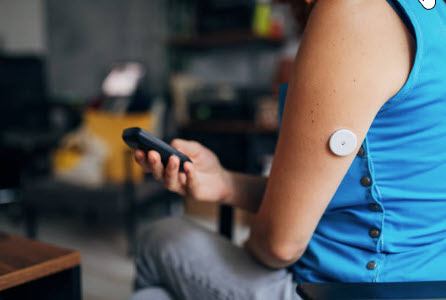Continuous Glucose Monitoring (CGM) is a medical device that helps people with diabetes to track their blood sugar levels in real-time. The device consists of a small sensor that is inserted under the skin and connected to a wearable device, such as a glucose meter or insulin pump. The sensor measures the glucose levels in the interstitial fluid, which is the fluid between the cells, and sends the data wirelessly to the wearable device. This allows people with diabetes to track their blood sugar levels throughout the day and night without having to perform regular finger pricks.
CGMs are particularly useful for people with Type 1 diabetes, who need to closely monitor their blood sugar levels to prevent dangerous high or low blood sugar episodes. However, people with Type 2 diabetes can also benefit from using a CGM, especially if they use insulin or have frequent episodes of high or low blood sugar.
The benefits of CGM are numerous. It helps people with diabetes to:
- Make informed decisions about their insulin doses, food choices, and physical activity
- Detect and prevent low blood sugar (hypoglycemia) and high blood sugar (hyperglycemia)
- Improve HbA1c levels, which is a measure of average blood sugar levels over a three-month period
- Reduce the need for finger pricks, which can be painful and disruptive
- Provide a more comprehensive view of glucose patterns and trends
CGMs are becoming increasingly sophisticated, with some devices offering real-time alerts, automatic insulin delivery, and data analysis tools to help people with diabetes better understand and manage their condition.
In conclusion, Continuous Glucose Monitoring is a valuable tool for people with diabetes to better manage their blood sugar levels and improve their overall health. With advances in technology, the future of CGM looks bright, offering even more benefits and opportunities for people with diabetes to live healthy and active lives.
